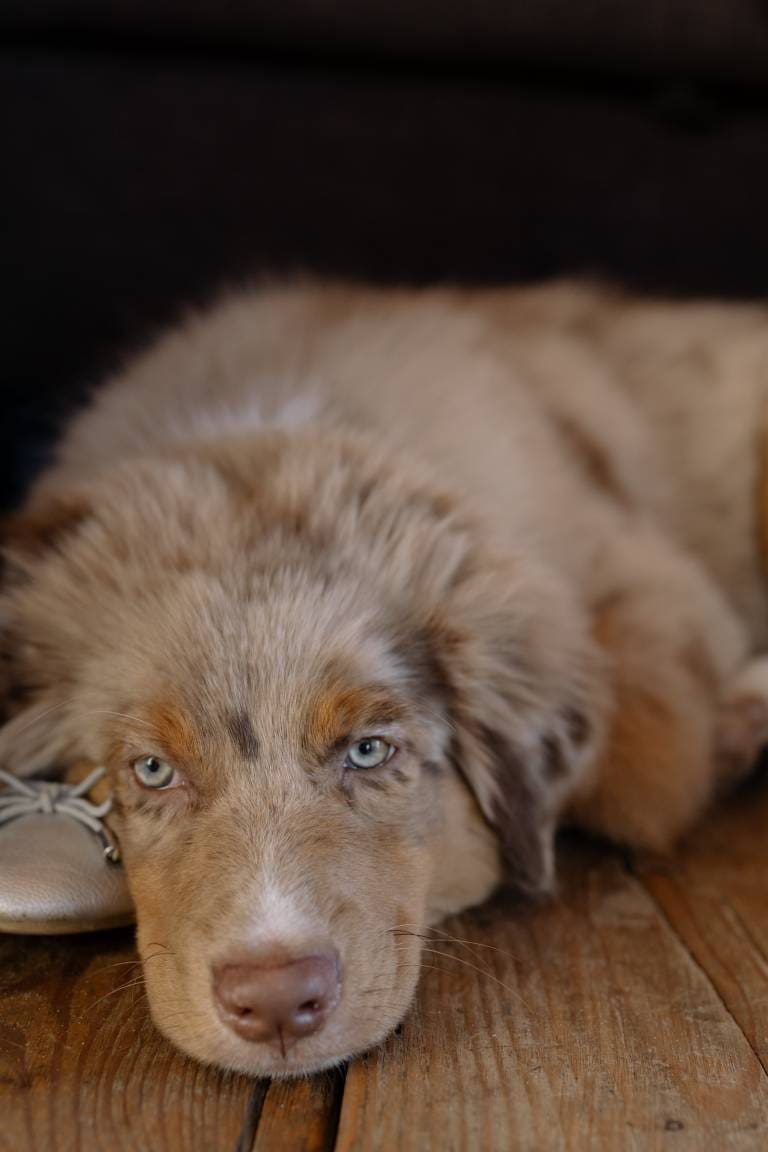How Many Litters Can A Dog Have?
Post Date:
December 10, 2024
(Date Last Modified: November 13, 2025)
Breeding capacity in domestic dogs depends on reproductive physiology, age, breed, health, and management choices. The number of litters a dog can or should have is shaped by biological limits and welfare-focused guidelines.
Canine reproductive biology
Dogs cycle through four reproductive stages: proestrus, estrus, diestrus, and anestrus.[1]
The average interval between heats for many dogs is about 6 months, with common natural ranges from roughly 4 to 12 months depending on breed and individual variation.[1]
Gestation in the dog normally lasts approximately 63 days from ovulation, with typical physiological ranges near 58 to 68 days.[1]
Dogs do not experience a true menopause in the human sense; reproductive senescence is gradual and fertility commonly declines with advancing age rather than stopping abruptly.
Age and reproductive lifespan
Small-breed dogs often reach sexual maturity between about 6 and 12 months of age, medium breeds commonly between about 12 and 18 months, and large or giant breeds often around 18 to 24 months before recommended first breeding.[2]
Peak fertility in most bitches is typically observed between roughly 2 and 5 years of age, after which conception rates and litter outcomes can decline.[3]
Veterinary and breeding organizations commonly recommend retiring dams from breeding by roughly 5 to 6 years of age or earlier if health, reproductive performance, or breed-specific guidance indicates concern.[4]
Breed and size differences
Smaller breeds tend to have shorter intervals between heats (for some, near every 4 months) while giant breeds more often have longer intervals that can approach 8 to 12 months between cycles.[1]
Average litter size varies with body size: small breeds commonly average about 3 to 5 puppies per litter, medium breeds often 5 to 8, and large breeds can average 8 to 12 puppies per litter.[5]
Brachycephalic breeds and certain conformation lines face higher rates of dystocia and surgical delivery; for example, some extreme short-faced lines require cesarean delivery in a large proportion of litters, which directly affects how often responsible breeders will attempt natural whelping.[4]
Heritable conditions (hip dysplasia, cardiac defects, certain eye diseases) reduce the advisability of repeated breeding from affected animals and alter lifetime breeding decisions.
Typical litter frequency and lifetime estimates
Many dogs average between about 1 and 2 heats that are suitable for breeding per year; a commonly cited average for owned bitches is roughly 1.5 heats per year when accounting for skipped cycles and management choices.[1]
Realistic breeding cycles for a responsibly managed dam often involve skipping at least one cycle between pregnancies or allowing a recovery period of about 12 to 18 months between whelpings as part of risk reduction.[3]
Example lifetime-litter estimate for a hypothetical small-breed dam that begins breeding at age 1 year and is retired at 6 years while averaging about 1.5 litters per year: the total would be near 7 to 8 litters over her breeding life.[2]
Example for a large-breed dam starting at 2 years and retiring at 6 years with one litter per year would yield approximately 4 litters over her breeding life when conservative spacing is observed.[2]
Skipping cycles, experiencing infertility, or planning wider spacing between pregnancies can reduce these totals substantially and are commonly recommended to protect maternal health and puppy outcomes.
| Size category | Common age at first breeding | Typical heats per year | Average litter size |
|---|---|---|---|
| Small | 6–12 months | 2–3 | 3–5 |
| Medium | 12–18 months | 1.5–2 | 5–8 |
| Large/Giant | 18–24 months | 1–1.5 | 8–12 |
Litter size and variability
Average litter size varies by breed and maternal factors; parity often increases average puppy count for the first two to three litters before stabilizing.[5]
Factors that decrease litter size include advanced maternal age, poor body condition, certain infectious diseases, and subfertility; factors that can increase litter size include optimal nutrition, appropriate parity, and when ovulation rates are high.[6]
Neonatal loss (stillbirths, early deaths) commonly reduces effective live-puppy output; neonatal mortality rates vary widely but can be appreciable in some populations, which is why breeders plan for contingency and record-keeping.
Lactating dams have markedly increased maintenance needs; for planning and clinical calculations, fluid and energy requirements are often discussed in per-weight clinical units—for example, maintenance fluid needs might be ~50 mL/kg/day while lactation and increased metabolic demand can raise total fluid and caloric needs to well over 150–200 mL/kg/day depending on litter size and milk production.[1]
Health risks of repeated breeding
Repeated breeding and repeated estrous cycles increase lifetime exposure to uterine hormone cycles, and intact bitches have a rising lifetime risk of pyometra that is associated with age and prior cycles.[4]
Brachycephalic and some large-breed dams have markedly higher rates of dystocia; in certain short-faced breeds, rates of cesarean delivery in some lines can exceed 50–80% for whelpings, which directly affects how frequently natural litters are attempted.[4]
Repeated pregnancies without adequate recovery can lead to nutritional depletion and anemia; monitoring hemoglobin and protein status is standard in serial breeders to avoid cumulative maternal harm.
Long-term impacts of frequent breeding can include reduced longevity or compromised quality of life when maternal body reserves and musculoskeletal health are repeatedly taxed.
Veterinary guidelines and safe breeding intervals
Many veterinary authorities recommend allowing at least one normal anestrus or roughly 12 to 18 months between whelpings to permit physical recovery and reduce cumulative risk.[3]
Recommended pre-breeding screens commonly include a complete blood count (CBC), serum chemistry panel, bitches’ progesterone timing or ovulation timing tests as appropriate, and infectious-disease testing for pathogens relevant to the region and breed line.[2]
- Common pre-breeding checks: CBC, chemistry, heart and orthopedic clearances, reproductive ultrasound or vaginal cytology as indicated.
- Vaccination and parasite control updated per veterinary guidance before mating.
- Genetic testing and breed-specific clearances based on breed clubs or specialty guidelines.
Post-whelping care should include monitoring maternal appetite and hydration, checking uterine involution and lochia, and early recognition of mastitis or retained placental tissue; veterinary follow-up within 24–72 hours of whelping is standard for higher-risk litters.
Ethical, legal, and welfare considerations
Local regulations, licensing, and kennel or breed-club policies sometimes limit the number of litters per dam or require specific health clearances before repeated breeding; compliance is part of responsible practice.
Overpopulation and rehoming responsibility are key constraints: each planned litter should include a documented placement plan, and breeders are ethically responsible for the lifetime outcomes of puppies produced.
Economic and emotional costs to owners and puppies (veterinary expenses, neonatal care, potential rehoming stress) are realistic limits that shape how many litters a conscientious owner should permit.
Responsible breeding practices and record-keeping
Genetic testing, breed-appropriate health clearances, and selective mating to reduce inherited disease are central to responsible multi-litter breeding programs.
Maintain detailed reproductive records that document heats, matings, pregnancy diagnostics, whelping dates, litter sizes, health screening results, and outcomes for each litter to track lifetime reproductive history and inform retirement decisions.
Plan retirement and rehoming for breeding animals well before performance or health declines; many breeders identify retirement benchmarks based on age, number of litters, or health events.
Spay/neuter timing and alternatives to breeding
Early spay before the first heat reduces the risk of mammary neoplasia substantially compared with intact bitches; studies commonly report large relative risk reductions when spaying occurs before the first estrus.[2]
Delaying spay can be considered for dogs intended for planned breeding, but the timing choice should weigh risks (pyometra, mammary and other disease risks) against breeding goals and breed-specific evidence.
Alternatives to producing litters include fostering, performance or working careers, conformation or sport showing, and contributing to the breed through non-breeding mentorship and genetic counseling.
Population-control considerations favor sterilization when breeding is not planned; spay/neuter also commonly reduces behaviors associated with roaming and some forms of inter-animal aggression, though individual outcomes vary.
Sources
- merckvetmanual.com — authoritative clinical summaries and small animal reproduction guidance.
- avma.org — American Veterinary Medical Association guidance on reproductive health and spay/neuter effects.
- aaha.org — clinical recommendations for small animal practice including breeding intervals.
- vcahospitals.com — veterinary specialists’ resources on breeding complications and breed-specific risks.
- wsava.org — global veterinary association statements on welfare and breeding best practices.
- nih.gov — peer-reviewed research summaries relevant to reproductive physiology and neonatology.






